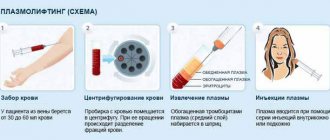There is probably no woman in the whole world who does not dream of beautiful and high breasts. And this dream is quite feasible. The only question is money and motivation.
Without a doubt, breasts should please their owner . An inferiority complex has never brought joy to anyone.
But is it worth deciding on such a serious operation? Are there really serious reasons and indications for it? What are the consequences? And what is mammoplasty anyway?
What is mammoplasty and why is it needed?
Over the past centuries, many ways to change the shape (and, of course, volume) of the breast have been invented. There were also special cosmetic procedures and products, homeopathy, clothing, folk remedies and hydromassage (which, by the way, is very effective due to increased blood microcirculation). Nowadays, mammoplasty, a surgical method, is considered the most effective method of breast correction . It implies correction of the volume, shape, contours, nipple or areola of the breast .
Many newfangled clinics and plastic surgeons, like mushrooms after rain, appearing on screens, radio and in advertising, promising “any whim for your money.” In this particular case - luxurious breasts. And quickly, with holiday discounts and safely.
A conscious decision to resort to mammoplasty is a serious step, in which mistakes can be fraught with loss of health .
It is worth remembering that for the female body, any surgical intervention is stressful. Therefore, the grounds for such a decision must be not just iron, but reinforced concrete.
Have you decided to undergo mammoplasty? What you need to know before the procedure!
- A prognosis for the results of mammoplasty can only be given by a professional plastic surgeon with significant experience and specific knowledge. This also applies to choosing the optimal mammoplasty option.
- At your first consultation with a surgeon, you should familiarize yourself with the results of the operations already performed.
- Possible complications, methods of preventing or eliminating them are also questions that should be asked to the doctor.
This issue needs to be studied with special care. With the exception of situations with the development of fibrous contracture, high-quality The implant is installed for life. The choice of implant is made based on the professionalism of the doctor and the individual characteristics of the woman.
Quality of implants.- Breast care after surgery . Rehabilitation period.
What you need to know about implants? Types of implants for mammoplasty.
The cost of an implant is not the first criterion for its selection. Selection is carried out strictly individually. The shape of modern implants is close to the natural shape of the breast - anatomical (“a frozen drop on the wall”), which will allow you to hide the contours of the implant. The only common feature for all implants is the silicone shell and purpose. Everything else depends on personal wishes and medical indications.
Today, surgeons mostly use silicone cohesin gels, which are distinguished by their homogeneous composition for the naturalness of the “new” breast and its elasticity. Disadvantage: if the implant is damaged, it is very difficult to detect a rupture of the shell due to the preservation of its shape. Plus: light weight. Implants with saline solution are considered less dangerous, thanks to the harmless, isotonic, sterile sodium chloride solution placed inside. Disadvantage: susceptible to leakage, “gurgling” effect when moving. Plus: softness, lower cost.
Endoprosthesis fillers.
. Textured implants are durable. Disadvantage: the risk of folds (wrinkles) from friction of the subcutaneous tissue on the surface of the implant. Smooth implants do not create such problems, but are dangerous with the risk of breast displacement at the most inopportune moment.
Structure
. The advantages of round implants: maintaining shape and symmetry even in case of displacement. Advantages of anatomical implants: natural appearance, thanks to the teardrop shape. The choice of shape depends on the woman’s preferences and the shape of the chest.
Form
Preliminary modeling provides an opportunity to visually familiarize yourself with the future results of mammoplasty and choose the best option.
Types of mammoplasty:
- Breast augmentation. The shape, in this case, is brought closer to the classic one, or preserved, and the volume of the breast is given according to desires.
- Changing the shape of the breast (lift). Changing the contours occurs by adjusting the skin frame and removing excess skin.
- Full breast lift and reduction. The most traumatic option, with many stitches and the inability to feed the child.
Why is mammoplasty done? When is it really needed?
As a rule, a woman undergoes such an operation for herself, her beloved, dreaming of admiring male gazes and swimming seasons without embarrassment or discomfort. But there are other reasons that encourage women to take this step.
and breast augmentation for personal satisfaction, which includes all the motives of a modern woman (career, love, beauty, ambition).
Striving for an ideal appearance- Medical indications.
- Change in breast shape due to asymmetry of the mammary glands
breast after surgery related to oncology.
Reconstruction- Indulging in the desires or demands of a beloved man.
Price in Moscow and St. Petersburg
The cost of breast correction is formed from several points:
- consulting services;
- medical examination;
- analyses;
- work of specialists;
- anesthesia;
- stay in the clinic;
- prices for implants.
Separately, it is worth calculating the cost of compression garments.
Depending on the level of the specialist, the clinic where he works, the type of correction, prices in Moscow range from 40,000 to 500,000 rubles. In St. Petersburg, breast augmentation will cost 100,000-130,000 rubles, reduction costs from 180,000 rubles, lifting from 72,000 rubles.
Surgery to correct the shape of the breast is no longer the preserve of a select few. Many clinics offer this service. You should study the reputation of the center and the doctor to protect yourself from unwanted consequences.
When is it possible and when not to have mammoplasty? Contraindications to mammoplasty.
Indications for breast correction:
- The patient's wishes;
- Macromastia (excessive breast enlargement);
- Micromastia (underdevelopment of the mammary glands);
- Breast involution (after pregnancy, childbirth and lactation);
- Ptosis (sagging).
Contraindications for mammoplasty:
- Oncology, blood diseases, infectious diseases and serious diseases of internal organs;
- Age less than eighteen years;
- During pregnancy and breastfeeding.
Preparing for mammoplasty: what happens before and after surgery.
During the preoperative period a woman must undergo an examination , which includes a general blood and urine test, an ECG, a blood test for anticoagulants, a test for hepatitis and HIV, and an ultrasound to exclude the presence of cancer.- The operation cannot be carried out without the woman's . Two weeks before surgery, you must stop smoking and alcohol, drugs containing aspirin, and the use of hormonal contraceptives.
- Mammoplasty is performed only after restoration of the mammary gland one year after childbirth and the end of lactation.
- The recovery period after surgery depends on the type and modification of mammoplasty (in particular, on the installation of an implant under the mammary gland or under the muscles). In most cases, the rehabilitation period takes about a month. It is also recommended to follow the prescribed restrictions and periodically see a specialist.
Indications for surgery
Aesthetic satisfaction with one's own breasts is just one of many reasons for indications for breast mammoplasty. Read on to learn about what mammoplasty is and who has direct medical indications for it.
Breast doctors and plastic surgeons identify a number of reasons for performing mammoplasty, plastic surgery on the mammary gland. Here are some of them:
- Breast size 1. The only way to correct imperfections with breasts that are too small is through surgery.
- The absence of one or both mammary glands due to the removal of cancerous or benign tumors.
- Breast deformation or trauma (may occur as a result of an accident).
- Pronounced asymmetry (if the mammary glands differ by more than a couple of sizes)
- Ptosis, pseudoptosis. Marked sagging of the breasts. One of the reasons is multiple births.
- Tubular breast. This pathology is congenital.
Surgery in these cases is a necessary measure to combat the physical imperfection of the female breast.
However, breast surgery will not be a solution for all women. There are some contraindications for its implementation.
The nuances of mammoplasty: how is the operation performed?
The time of plastic surgery is from an hour to four hours. The operation is followed by a recovery period, which is invariably subject to a number of restrictions. discharged one day after mammoplasty.
In the first days there is postoperative swelling , which subsides after two weeks, and pain.
In rare cases, bruising. Wearing compression garments is recommended for a month after surgery. Restrictions on work and physical activity for a week after surgery.
Reduction mammoplasty
This type of breast surgery is used when it is necessary to reduce its size in order to get rid of conditions that cause discomfort to a woman, for example, pain in the back, neck, chest, curvature of the spine, itching in the inframammary fold, diaper rash under the breasts and much more.
In addition to size reduction, reduction mammoplasty also allows:
- Make your bust taller and more toned.
- Restore breast symmetry.
- Tighten your nipples and reduce the size of your areola.
- Restore the shape of the mammary glands after lactation and pregnancy.
- Increase your self-esteem thanks to the beautiful appearance of your breasts.
As a rule, the duration of such an operation is from 3 to 5 hours. Reduction mammoplasty is performed under general anesthesia. The whole operation is divided into several stages:
- Precise markings are applied to the skin of the chest.
- Skin incisions are made on the mammary glands.
- The size of the areola is determined.
- Excessive areas of skin are cut off.
- Excess fat deposits are cut off, as well as glandular tissue, if necessary.
- The nipple is moved to a higher position, while ensuring the safety of the vascular bundles and nerve bundles, as well as the milk ducts.
- Finally, deep sutures are applied, and then cosmetic external ones.
The shape and size of the incision during surgery will depend on the amount of excess skin on the mammary glands that needs to be cut off. The incisions can be vertical for a small amount of removal. If more than 500 g of iron needs to be removed, a T-shaped incision is made.
After such an operation, a woman can be discharged from the clinic on the second day. But after this, you need to come for a consultation with a specialist in about one week, if a visit has not been previously agreed. External sutures are removed after 1-2 weeks. For six months after the operation, scar formation is observed, which becomes almost invisible over time.
A woman can return to work no sooner than 3 weeks after surgery. If we talk about hard physical labor or sports, then after breast surgery it is forbidden to engage in physical activity for two months.
During the entire recovery period, it is necessary to wear special compression garments, and also protect against possible pregnancy.
It is also necessary to take into account that the following complications may occur after mammoplasty:
- Necrosis of areola and nipple tissue.
- Formation of rough scars.
- Suppuration and bleeding.
What complications occur after mammoplasty?
Any operation is accompanied by a risk of complications. Mammoplasty is no exception.
- Around the installed prosthesis, after a certain time after the operation, the body forms a capsule-shell. It can move the implant, which can result in hardening and asymmetry of the mammary glands . This problem is solved by the method of capsular contracture. When it is decided to remove the capsule, the prosthesis is removed and replaced with a new implant.
- Complications of mammoplasty can include infection, bleeding and slow wound healing . If there is bleeding, a second operation is performed to remove the blood that collects inside. To stop the spread of the resulting focus of infection, the implant is removed and replaced with a new one. As a rule, the formation of infection is characteristic of the first week after surgery.
- Exacerbation (or loss) of sensitivity of the mammary glands is one of the complications. In most cases, such complications are short-term. Although there are exceptions.
- Breast implants are required to undergo strength testing. But, unfortunately, they are not immune to collisions with sharp objects. As a result of such a collision, there is a risk of a hole being formed in the prosthesis shell and penetration of the solution or silicone into the body tissue. Usually this problem is solved by replacing the prosthesis. As for the penetration of the saline solution into the tissues, it is absorbed by the body. The danger of damage is the risk of penetration of silicone into the tissue (the woman may not feel the damage).
- If a woman has an implant, mammography only by doctors who are specially trained and familiar with the method of examining the breast with a prosthesis.
Bust mastopexy
Mastopexy is a breast lift that is performed in cases where the mammary glands have lost their shape. During the operation, the position of the areola and nipple is repositioned, excess skin is removed and breast tissue is redistributed. As a result of these actions, the bust acquires a natural, harmonious shape.
The duration of such an operation will depend on the complexity, it varies from 2 to 4 hours. The procedure is performed under general anesthesia. The location of the stitches on the chest will depend on how much it has lost its shape. If the bust has been lowered slightly, then incisions are made on the side or around the nipple. If the mammary glands sag significantly, then incisions will have to be made from the areola to the fold under the breast below, as well as inside the fold.
As a rule, after surgery, pain continues for another 2 weeks, but the bust will take its final shape in one week.
Such plastic surgery also carries some danger . The main complications of such a surgical intervention may be necrosis of the areola tissue, as well as loss of sensitivity in its area.
Stages of the operation - how is mammoplasty surgery performed?
Operation planning:
- Study of individual characteristics with subsequent conclusion and decision-making on the surgical method based on the characteristics of the breast and skin.
- Discussion of possible options for solving the required problem, risks and limitations. (The doctor must know about taking medications, vitamins and bad habits).
- Providing information about anesthesia, the cost of the operation and the technique of performing it (the insurance policy does not cover the cost of mammoplasty).
Direct operation:
The incision, depending on the structure of the breast, can be made in the armpit, along the border of the areola or under the breast. After making an incision, the surgeon separates the skin and breast tissue to create a pocket behind the chest wall muscle or behind the breast tissue. The next step is to place the selected implant into it.
Disadvantages of mammoplasty:
Long recovery period (the size of the implants is proportional to the adaptation period);- Consequences of anesthesia (nausea, etc.) on the first day after surgery;
- Pain that must be relieved with analgesics every six hours;
- The need to wear compression garments for a month (including nights during the first two weeks);
- Traces of postoperative sutures . The size of the scars depends on the characteristics of the skin, the size of the prostheses and the talent of the surgeon;
- Refusal of active sports (basketball, swimming, volleyball) and training on exercise equipment with load on the muscles of the shoulder girdle;
- Quitting cigarettes (nicotine has a detrimental effect on blood circulation and blood flow to the skin);
- Avoidance of saunas and baths. For at least two months after surgery. In the future, it is necessary to monitor the temperature of the steam room - it should not exceed one hundred degrees;
- After the operation, doctors recommend not to become pregnant for a long time . At least six months. After six months, planning a pregnancy is allowed, but it is worth remembering that caring for the breasts and nipples will have to be carried out more carefully and scrupulously;
- Risk of complications (inflammation, infection, hardening, breast deformation);
- Changing implants every ten to fifteen years (recommendation of plastic surgeons);
- Significant material costs ;
- Discomfort and certain inconveniences when the new breast volume is too large.
Recommendations during the rehabilitation period after mammoplasty
The most popular questions regarding the recovery period are:
- when can you start playing sports?
- how long should you not have sex;
- how long it is necessary to observe restrictions on alcohol and nicotine;
- when you can raise your arms without harming your stitches and chest.
Let us consider in order what recommendations plastic surgery gives on these issues.
Exercise and sex
Breast tissue should recover after plastic surgery. The pectoral muscles cannot be toned often and strongly. This is necessary to ensure that recovery after mammoplasty occurs quickly. At first, the load on your hands should not be more than 3 kilograms (1.5 kilograms for each hand). You can do light chores around the house or go to work from 7 to 10 days, if your activity does not involve bending over, carrying heavy objects, or raising your arms above your shoulders.
You can return to physical activity and sports no earlier than in a month. It is necessary to consult with a surgeon before classes. It is necessary to load the muscles gradually, starting with light fitness or light loads in the gym. When playing sports, you should definitely use compression garments.
Also important is control over your body weight. During the adaptation period, it is advisable to maintain weight at the same level, without sudden weight gain or weight loss.
For 4-6 weeks, a woman should refrain from having sex. The ban is associated primarily with hormonal changes and fairly intense physical activity. During sexual tension and orgasm, a woman's hormonal levels change, and a large flow of blood enters the breasts, which can increase swelling and pain. If medical advice is not followed, the risk of implant displacement and suture damage increases.
Why you can’t raise your arms after mammoplasty
Ladies often wonder how to behave so as not to harm the silicone breast rehabilitation process. Raising your arms above shoulder level helps stretch the muscle tissue and significantly shift the mammary glands. Disturbing this area of the body, much less subjecting it to stretching in the coming weeks, is strictly prohibited.
After a two-week period, plastic surgery usually removes the strict demands on body movements. But to prevent suture rupture and worsening breast swelling, a consultation at the clinic is necessary.
Alcohol and smoking after breast surgery
After breast augmentation surgery, smoking and drinking alcohol-containing drinks are prohibited for 1.5 - 2 months.
If giving up nicotine is extremely difficult, then you need to abstain from smoking for at least 3 weeks. Nicotine causes stagnation of blood in the veins, which can cause tissue necrosis or thrombosis. Smoking also negatively affects blood circulation and wound healing.
With alcohol, everything is much stricter; the restriction period must be observed in accordance with the surgeon’s recommendations.
Reasons for prohibiting the use of alcohol-containing products after breast augmentation surgery:
- against the background of a weakened immune system, alcohol can serve as a source of exacerbation of chronic diseases;
- there is a decrease in the rate of wound healing;
- Combining prescribed drugs with alcohol can lead to disturbances in the functioning of the nervous system.
Breastfeeding after mammoplasty surgery
Is it possible to breastfeed a child after mammoplasty? No one can predict what exactly will happen during pregnancy and childbirth, given the operation performed. All organisms are individual. Of course, a woman whose biography includes the fact of undergoing mammoplasty should carefully approach both pregnancy planning and examinations, the pregnancy itself, the birth of the child and its feeding. You can’t do this without expert advice.
During pregnancy, the following changes occur in the mammary glands:
- Darkening of the skin around the nipples (and the nipples themselves);
- Darkening of blood vessels (occurs due to increased blood flow to the chest);
- Breast augmentation;
- Yellow discharge (or colostrum);
- Increased breast sensitivity;
- Raising of the glands on the surface of the peripapillary region;
- Protrusion of veins.
Expectant mothers whose pregnancy occurs after mammoplasty should take care of their breasts with great diligence . It will be useful to attend special classes for pregnant women for this situation, do exercises, properly organize your diet and do not forget about massage and contrast showers.
According to plastic surgeons, implants do not cause harm to the child’s health. But still, we should not forget about the risks associated with the presence of these prostheses in the chest (unexpected injury to the implants can harm the health of both). Therefore, nursing mothers should undergo breast examinations more often to exclude this kind of situation.










